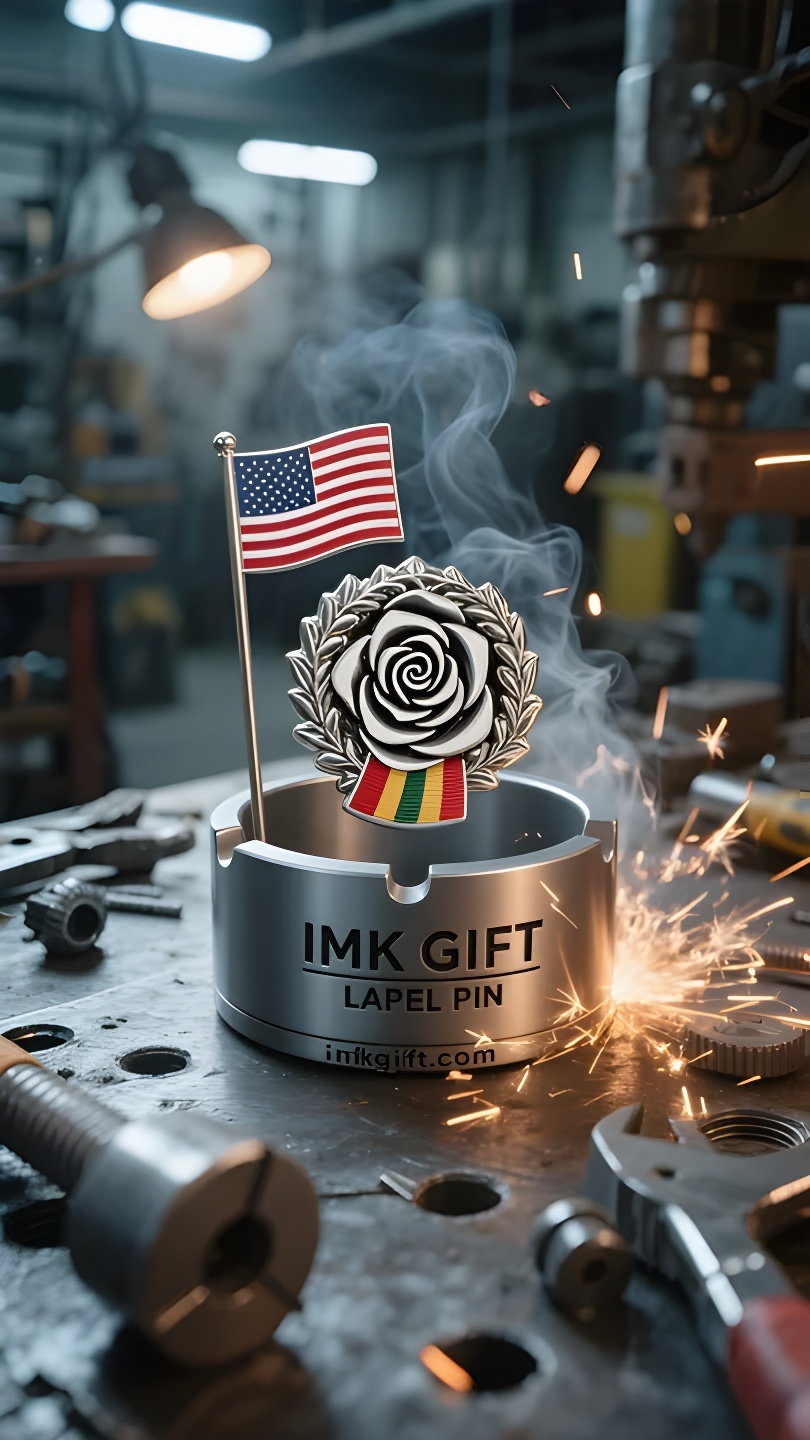in985-Küllerin-Üstünde-Kırmızı-ve-Beyaz-Çiçek
▼
Ekim ayında İstanbul sokaklarında kırmızı-beyaz bayraklar rüzgarda dalgalanırken, Cumhuriyet Bayramı’nın ihtişamı Boğaz’da parlıyor. Binlerce yıllık medeniyetin izlerini taşıyan bu topraklarda, lale motifleriyle süslü bakır bir kül tablası, Türk milletinin küllerinden yeniden doğuşunun şifresini sessizce anlatıyor. Küllüğün spiral yapısı Osmanlı yapısının kubbesine benzemektedir. Küller sessizce içinde biriktiğinde, tarihin uzun nehrinde acıların tortusu gibidir. Ama merkezdeki çiçek açmış lale kabartması her zaman parlaktır – 16. yüzyılda Anadolu Platosu’ndan dünyaya tanıtılan milli çiçek, bu milletin harabelerden yeniden doğuşunun metaforu gibidir. Tıpkı Kurtuluş Savaşı’nda kurucu babamız Atatürk’ün yaktığı kıvılcım gibi, küller de hiçbir zaman son değil, yeni bir hayatın besinidir. Çağdaş zanaatkarlar kül tablasını dönebilen bir yapıya dönüştürmüşler ve dönerken hilal ve yıldız amblemi lalelerin arasında bir görünüp bir kayboluyor. Bu, Türkiye’nin hayatta kalma felsefesiyle de örtüşüyor: Savaşın külleri bir gün toprağa düşecek ama kırmızı ve beyaz bayraklar tarihin döngüsünde her zaman dengeli kalacaktır. İznik çini ustasının dediği gibi: “Gerçek güzellik, yandıktan sonra şeklini koruyabilmekte yatar.” Cumhuriyet Bayramı havai fişekleri gecenin karanlığını aydınlattığında, küllükte sönen kıvılcımlar çoktan binlerce ışıkla inatçı bir ışığa dönüşmüştü. Her Türk bilir ki hayat bir lale soğanına benzer. Ancak karanlığın derinliklerine gömüldüğünde en göz kamaştırıcı kırmızıyı açabilir.
In the streets of Istanbul in October, the red and white national flags fluttered in the wind, and the glory of Republic Day reflected on the Bosphorus Strait. On this land carrying a thousand-year-old civilization, a copper ashtray inlaid with tulips is silently telling the code of the Turkish nation’s rebirth from the ashes. The spiral pattern of the ashtray coincides with the dome of the Ottoman building. When the ashes quietly accumulate in it, it is like the precipitation of suffering in the long river of history. But the blooming tulip relief in the center is always bright – the national flower that spread from the Anatolian Plateau to the world in the 16th century is like a metaphor for the rebirth of this nation in the ruins. Just like the spark ignited by the founding father Ataturk in the War of Independence, the ashes are never the end, but the nutrients for new life. Modern craftsmen designed the ashtray into a rotatable structure, and the crescent and star emblem are looming between the tulips when it rotates. This coincides with Turkey’s philosophy of survival: the ashes of war will eventually fall to the earth, and the red and white flags will always maintain balance in the rotating history. As the master of Iznik pottery said: “True beauty is to keep the shape after burning.” When the Republic Day fireworks lit up the night sky, the sparks that were once extinguished in the ashtrays had already turned into the tenacious light in the lights of thousands of houses. Every Turkish person knows that life is like a tulip bulb. Only when it is buried deep in the darkness can it bloom the most dazzling red.
十月的伊斯坦布尔街头,红白相间的国旗迎风招展,共和国日的荣光映照着博斯普鲁斯海峡。在这片承载千年文明的土地上,一只镶嵌着郁金香纹饰的铜制烟灰缸,正无声诉说着土耳其民族浴火重生的密码。
烟灰缸的螺旋纹路暗合奥斯曼建筑穹顶,当灰烬在其中静静堆积,宛如历史长河中的苦难沉淀。但中央盛开的郁金香浮雕始终灼灼——十六世纪从安纳托利亚高原传向世界的国花,恰似这个民族在废墟中重生的隐喻。正如国父阿塔图尔克在独立战争中点燃的星火,灰烬从不是终点,而是新生的养料。
现代工匠将烟灰缸设计成可旋转结构,转动时新月与星徽在郁金香间若隐若现。这暗合着土耳其的生存哲学:战火的灰烬终将落入大地,而红白旗帜永远在旋转的历史中保持平衡。正如伊兹尼克陶艺大师所言:“真正的美,是在灼烧后依然保持形态。”
当共和国日的焰火照亮夜空,那些曾被按灭在烟灰缸里的星火,早已化作万家灯火里的坚韧光芒。每个土耳其人都明白:生命如郁金香球茎,唯有深埋过黑暗,才能开出最耀眼的红。
▼
Contact Us
📞 Tel: +0086-760-85286839
📧 Email: sales3@imkgift.com








